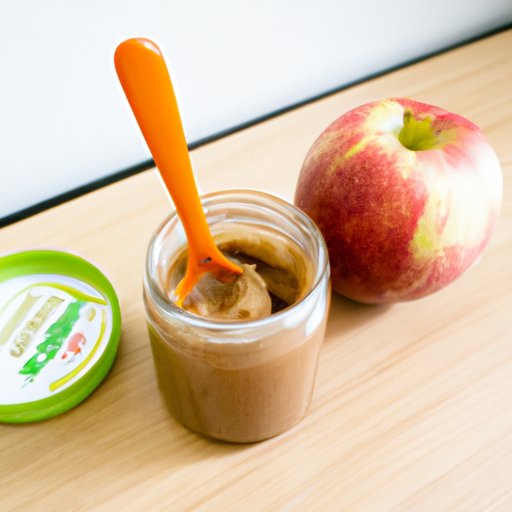
Introduction
For those with a gluten intolerance or celiac disease, finding gluten-free options can be a challenge. Applesauce is a classic snack and ingredient that many people enjoy, but is it gluten-free? In this article, we’ll explore the risks of gluten in applesauce, how to find gluten-free options, and the benefits of incorporating gluten-free applesauce into your diet.
What is Gluten?
Gluten is a protein found in wheat, barley, and rye. It helps give dough its elasticity and is commonly used in bread and other baked goods. In addition to baked goods, other common sources of gluten include pasta, cereal, and beer.
Gluten in Applesauce: Understanding the Risks
While applesauce itself doesn’t contain gluten, it can become contaminated with gluten during the manufacturing process. For example, gluten may be present in the facilities where the applesauce is produced or processed. Additionally, some brands of applesauce may add ingredients that contain gluten, such as flavorings or thickeners.
For those with gluten-related issues, consuming even a small amount of gluten can have serious health consequences. It can cause damage to the small intestine, resulting in a range of symptoms including bloating, abdominal pain, and diarrhea. Therefore, it’s important to carefully read labels and choose gluten-free options.
Gluten-Free Applesauce: What You Need to Know
When looking for gluten-free applesauce, there are a few things to keep in mind. First, check the label for ingredients that contain gluten, such as wheat or barley. Look for brands that are specifically labeled as gluten-free. If you’re unsure, reach out to the manufacturer to confirm whether or not their product is gluten-free.
Another option is to make your own applesauce from scratch. This way, you can have complete control over the ingredients and ensure that it’s gluten-free.
It’s important to note that while homemade applesauce is generally gluten-free, using utensils or kitchen equipment that has come into contact with gluten-containing foods can lead to cross-contamination. Be sure to thoroughly clean any utensils or equipment before using them to make your applesauce.
When it comes to types of applesauce, there are many options to choose from. Some brands add sugar or other ingredients for flavor, while others offer unsweetened or no sugar added varieties. Choose the one that best fits your dietary needs and preferences.
Cooking with Gluten-Free Applesauce
One of the benefits of using applesauce in cooking and baking is that it can be a substitute for fat. This is particularly helpful in gluten-free baking, as gluten-free flours can often be dry and crumbly. By using applesauce instead of oil or butter, you can add moisture to your recipe while making it healthier at the same time.
Some recipe ideas that use gluten-free applesauce include:
- Gluten-free apple oat muffins
- Applesauce cinnamon pancakes
- Gluten-free applesauce cake
Benefits of Gluten-Free Applesauce
Applesauce itself offers many nutritional benefits. It’s low in calories, high in fiber, and contains vitamins and minerals such as vitamin C, potassium, and folate.
By choosing gluten-free applesauce, you’re not only avoiding the harmful effects of gluten, but you’re also making a healthy choice. It’s a great addition to a gluten-free diet and can be a tasty and convenient snack.
Conclusion
It’s important to be aware of the risks associated with gluten in applesauce and to carefully read labels before making a purchase. By choosing gluten-free options or making your own applesauce from scratch, you can safely enjoy this classic snack and ingredient. Using applesauce in gluten-free cooking and baking can also add moisture and nutrition to your recipes. Give gluten-free applesauce a try and enjoy the tasty and healthy benefits.




